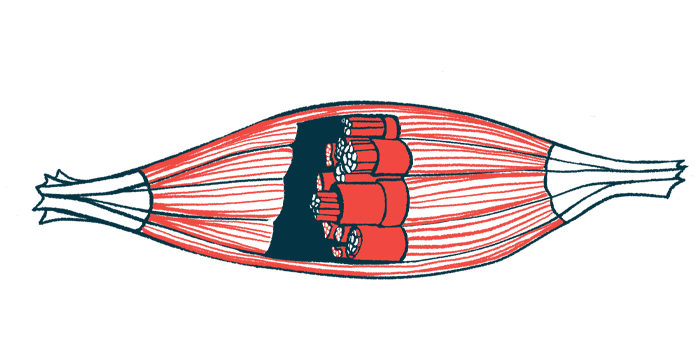Loss of muscle mass, strength common at young age in AS: Study
Review suggests patients should take action early to build muscle tissue

Sarcopenia, a gradual loss of muscle mass and strength, may happen at a rather young age in people with ankylosing spondylitis (AS), a systematic review study has found, with researchers suggesting AS patients should take action early to build muscle tissue and age healthier.
While no specific age range was given, the researchers reported that “evidence points to a correlation between AS and premature muscle strength loss, suggesting a potential onset of sarcopenia” at younger ages than those typically seen in people without this type of arthritis.
As such, AS patients “may benefit from early and targeted interventions,” the team added.
Titled “Is sarcopenia a real concern in ankylosing spondylitis? A systematic literature review,” the work appeared in the European Geriatric Medicine journal.
Review involved 14 studies of nearly 600 AS patients across 9 countries
As people grow older, their muscles tend to become smaller and weaker. While such loss of muscle mass may start around age 40, sarcopenia is more common in older adults. However, it can develop faster in people who live a sedentary lifestyle.
Inflammation also appears to have a role to play in how quickly sarcopenia develops.
In AS, chronic (long-lasting) inflammation damages the joints in the spine, leading to lower back pain and stiffness. As a result, patients may slip into a less active lifestyle.
Given that chronic inflammation resulting in pain, a reduced range of movement, and a sedentary or less active lifestyle could contribute to a loss of muscle mass and strength, a team of researchers in Italy now sought to determine how common it is for patients with AS to develop sarcopenia.
In reviewing the scientific literature, the team identified 14 studies describing muscle mass and strength or the presence of sarcopenia in a total of 1,233 adults from nine countries around the world; 596 had a diagnosis of AS.
Of the five studies focusing on sarcopenia, three followed recent diagnosis guidelines. In a 2023 French study that included 53 patients with axial spondyloarthritis, of which AS is a subtype, about 21% were likely to have sarcopenia compared with 7% of control individuals. The patients had a mean age of 43.6.
In a 2022 study from Portugal, young patients were found to have low muscle mass and strength, but no sarcopenia. However, in Thailand, a study with 104 adults with AS, with a mean age of 42, identified sarcopenia in as many as 85.6% of patients. These patients tended to be older and slimmer.
A 2018 study found that pre-sarcopenia — a loss of muscle mass without loss of muscle strength — occurred more frequently in AS than in other types of arthritis. And in a 2016 paper, sarcopenia was less common than pre-sarcopenia. These patients tended to have active AS.
Sarcopenia, or loss of muscle mass and strength, seen more in AS patients
Other studies focused on muscle mass or strength. Patients with ankylosing spondylitis tended to have lower muscle mass compared with healthy individuals, with significant differences observed in mean appendicular muscle mass, or the sum of muscle mass of all four limbs.
In general, patients also had lower muscle strength relative to controls.
Handgrip strength, however, showed mixed results. The researchers noted this was not significantly different between patients and healthy controls in two studies.
“While the methodologies for evaluating muscle mass, strength, and sarcopenia varied among studies, the collective evidence suggests a potential correlation between compromised muscle health and AS in adults, irrespective of age,” the researchers wrote.
We hope that our work can contribute to reflecting on an emerging issue for these young [AS] patients, which has the potential to be prevented and treated in order to ensure successful aging for them.
The results of this review led the researchers to conclude that, among people with AS, sarcopenia may start to develop at a young age. Thus, the study suggests patients should take steps to keep their muscles strong and healthy by staying active and doing exercises that help to build muscle mass.
“We hope that our work can contribute to reflecting on an emerging issue for these young patients, which has the potential to be prevented and treated in order to ensure successful aging for them,” the researchers wrote.
“Non-pharmacological interventions such as physical exercise are crucial for maintaining and improving neuromuscular function, mobility, and functional capacity, ultimately reducing pain and preventing joint deformity,” they added.








